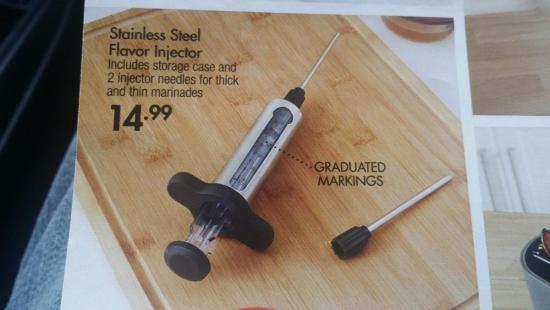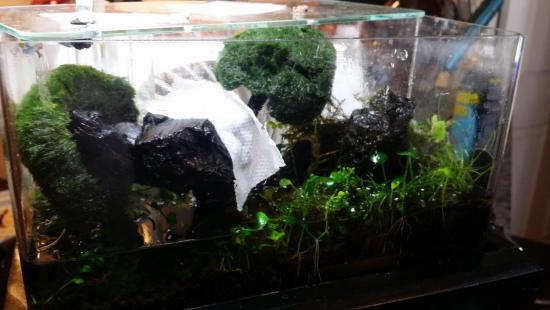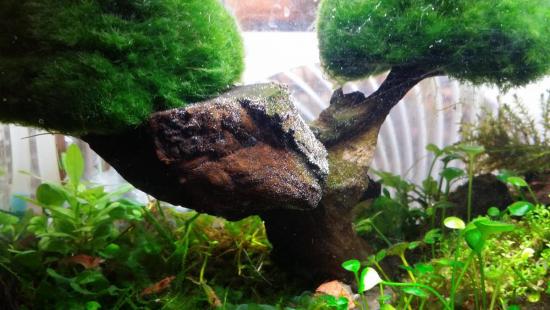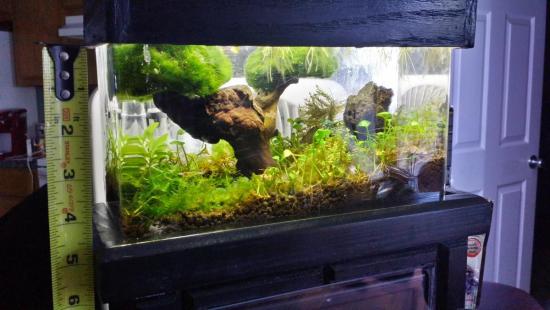-
Posts
63 -
Joined
-
Last visited
-
Days Won
1
brandonm last won the day on February 20 2013
brandonm had the most liked content!
brandonm's Achievements
Newbie (1/14)
3
Reputation
-
in these cases above, we see that target kill was the right move not a months long slow starvation process...thats using a preventer where a remover should be used. the pics above show the simplest way we've found to battle algae, cheat when you need to. we are already cheating keeping these animals from a large natural habitat in our little boxes. when you see algae in your tank, your GFO, phosphate management, clean up crew is failing, they aren't able to keep up with eutrophication rates due to lighting and inevitable nutrients we will keep adding so you go in, kill the mass, then stay the course with your secondary water treatments. Dont reactively alter whole tank water chemistry when you get an algae outbreak, natural reefs dont, just graze better, thats exactly what natural reefs do to withstand algae incursion. I have found for sure that we stress corals less overall with a targeted kill w peroxide, vs heavier nutrient stripping which has bleached many a tank as reactive whole tank algae treatments were chosen first. we step in to correct that mode, in these big peroxide threads. natural reefs that would test perfect on our test kits will simply be overrun with many species of algae if you remove the grazers, fact. we are but mere chemical grazers in this thread B
-
This is a powerful and cheap tool for use, its this type of approach we favor over adding mls of peroxide to the topwater: with this simple meat injector, we can turn off pumps and still the tank. The we can inject any clump of algae, slowly, and make less peroxide more effective. Super slow basting inject! others have used diabetic syringes Peroxide has a unique place in aquarium science because its a fairly tolerable oxidizer with known metabolic pathways in almost all respiring organisms from the reef to the lake to the desert, even humans produce it measurably at the cellular level and have enzymes to deal with it, as do many animals. In our case, the list of tolerant organisms vastly outweighs the intolerant ones, so whether we use it in a broadcast manner in the water, or targeted in some of these creative ways its an amazing molecule that seems to target algae in interesting ways. Ive found this to mean its stressing everything in the tank, but 99% have the cellular mechanisms to deal with it and plants do not. Thats how we discovered the amazing usefulness across reef tanks, each person giving feedback over thousands of posts of what succumbed and what thrived after use. Discosoma mushrooms actually begin to reproduce after habituated treatmenst~my vase is now overrun with them but it sure is algae free heh this thread here is another massive, massive peroxide thread with more examples you can see, almost all pertaining to nano reefs. the RC linked thread is mainly large reefs 20-300 gallons i estimate through these threads, and through private PM tank fixes we have used peroxide to correct five thousand aquariums. a straight 5 yrs and more pms are in my inbox right now http://www.nano-reef.com/topic/268706-peroxide-saves-my-tank-with-pics-to-prove-it/page-49
-
Thank you Admiral! I also wanted to drop this in, thought Id already put it up but I guess not. This is the reefbowl where 100% of the peroxide technique I use started and continues, its 9 yrs old and immune to any invader no matter the nutrient levels. Sure the sps are mainly brown but its a gallon give a brother some slack it is hard enough just to get them to stick all over the glass, and, sps from 2006 wasnt all colorful and awesome like it is now for pico reefs lol thanks for participating in our thread everyone, I hope for it to become another giant repository of pictures before, after and during of various peroxide work. it is the handiest tool Ive ever seen in 25 yrs of aquarium work. I use the drain and treat method. drop the water line to zero, spot dose, refill change water again. this is how nanos work best for our treatment, this concentrates the peroxide on the target and then briefly dissolves it in the whole water, only to be changed out again for clean water. this is a tidal motion that cleans out my sandbed too, making it last indefinitely and not pollute the bed. It means the system doesnt have to take on the full capacity of peroxide and slowly expose all the animals to it...even my coral banded shrimp doesnt mind and this is 35% its 6x stronger than whats being used here! B
-
Also want to remind again that our reference thread shows 3-5 ways to apply peroxide that don't involve adding it to the whole tank all at once coral stress can be greatly reduced by simply scrolling through the thread and seeing discussion about underwater spot injections, tank drain treatments where you can simply refill with the same water removed to access the spots, underwater capture tricks using little medicine bottles or mini tarps that hold peroxide onto the target area, and more. I like to keep that in mind to prevent new dosers from just going to a whole tank dose first attempt, when in fact there are much better options to clear algae and preserve corals. Nearly all coral stress can be stopped using the alternate techniques shown in the thread because it uses less overall peroxide in the system, and concentrates more on the target. B
-
I even use peroxide in delicate planted tanks with no problems. I keep high fert and co2 levels in this .5 gallon planted tank so algae also likes it during water change I placed a paper towel wet with peroxide across some spots that were developing algae, to remove it. im working the method on this tank too and it will be algae free its entire life. I take action on the first spot and kill it immediately. decisive action, fast and easy. As time goes by I'm repeating peroxide work far less than the hassle of chasing params I think good params are wise, but to save tedious testing I just do large water changes and attack algae directly. I don't choose to use preventatives, small tanks are easy to zap upon refill, look at the peroxide bubbling off the micro tree stump
-
I even use peroxide in delicate planted tanks with no problems. I keep high fert and co2 levels in this .5 gallon planted tank so algae also likes it during water change I placed a paper towel wet with peroxide across some spots that were developing algae, to remove it. Not to prevent it, im working the method on this tank too and it will be algae free its entire life. I take action on the first spot and kill it immediately. decisive action, fast and easy. As time goes by I'm repeating peroxide work far less than the hassle of chasing params I think good params are wise, but to save tedious testing I just do large water changes and attack algae directly. I don't choose to use preventatives, small tanks are easy to zap upon refill, look at the peroxide bubbling off the micro tree stump
-
Admiral im so sorry but neomeris annulata is the #1 worst reef tank invader I know of, see the middle pages of our thread. We had guys putting ***35%**** peroxide into their tanks and wiping some corals, only for neo to remain strong. others chiseled it out of the rock work to take out any holdfasts, leaving chips and scars along the way. The only thing I know to beat neomeris is the ultimate protocol, nothing beats it: universal exclusion. Coming from someone who fixes lots of tanks Im saying we should reserve neo and a few others for the act of see it, simply remove the entire rock for the life of the tank. Some variants are simply too risky to maintain, and I vote neomeris annulata as the prime one to exclude if ever seen on any rock. trade it off, qt it, boil it etc but simply remove the substrate from the reef when we see it. I class it as only beatable by luck, never repeatable. never ever predictable like what we do in that big thread. I really hated not being able to reliably beat neomeris, we put a lot of work into it where it exists in that thread. I mean a lot of work, guys lost a lot of coral in that battle. But ill claim victory silly documented over green hair algae, invasive macros and brush algae variants.
-
Finbir thanks for posting. Ill tell you this, being labeled a bandaid is what prevents direct action from occurring on algae patches, and that leads to wrecked tanks. direct action on the algae is not a secondary or less preferable method, its a viable solution. Its chemical grazing, and grazing is what prevents algae from taking over natural reefs, not GFO or even nutrient management. Its well documented on reefs that once we remove the grazers, the urchins, the parrots, the ________ algae will dominate. caulerpa can dominate, how well does taking indirect action work for caulerpa control in wild invasive patches? not well I dont think every tank should use peroxide. Its merely a handy, and highly predictable cheat for the times its indicated. Im an advocate of total control, simply dont permit algae. Before someone showed me peroxide, I was literally fire burning algae off my reef like this: We were simply told incorrectly that attaining nutrient level _________ guarantees you a no algae tank wrong, it may help, and does as a nice preventative, but its never the solution to an existing algae problem. That solution is make the algae gone yesterday, then employ a preventative to prevent. as soon as we see invasive species X on our reefs, the clean up crew is failing. the nutrient control, no matter how low the phosphates are registering, is failing. strain it much more and we'll starve and bleach our corals who also need nitrate and phosphate for coloration and health. You can see in my thread a huge, huge portion of those tanks were already employing the nutrient limiter of the day and still had X invading their tank. our method is used to fight nearly any form of plant invader, except neo The point of this peroxide thread is: preventatives are GFO, refugiums, clean up crews, turf scrubbers, etc. things that keep the water in check removers are: fire, peroxide, bleach, even just hand removal. something thats decisive. something that repeats, and just because it repeats doesnt mean it cant be used to literally stop an algae invasion. i document in that big thread several tanks of perfect water params that still had even basic Green hair algae problems, something supposed to be strictly nutrient related but wasnt (in the water column) we use peroxide to mass clear biomass that would otherwise take weeks to starve, then your preventers have a real shot. without overstripping the water in retroactive haste. it has no bearing on neomeris annulata
-
I really like the input on this thread just after a few mos this is exactly how peroxide threads get so large, building upon last application technique with pics Before we dump large amounts in the tank (as you can see mostly safe, no biofilter death as once assumed etc) be SURE and read this 4 yr thread on what peroxide does in your tank, before you dump We have one to many thousands of dollars in these tanks and vs a large dump repository, at least read what many others across the globe did with large tanks vs full addition to the running tank we have tanks where the keeper installs a little underwater tarp made out of think plastic wrap, secures it to a troubled rock, and then injects peroxide only up under that tarp, lessening contact to sensitive organisms. then we have tank drains + treatment, which is what i do is my massively old and small 1 gallon vase reef, the system that made the data for the entire thread below where tanks up to 450 gallons were treated. So as you can see above, clams, nitrifying bacteria, a multitude of soft and stony corals, all are pretty tolerant of peroxide but from this giant thread below, these are not: 1. lysmata cleaner shrimp species and blood shrimp will almost always die when exposed to any dilution. I suspect it has something to do with heritable traits in that species regarding free radical metabolism details, they just cant tolerate. Lysmata cleaners are the single most peroxide weakest animal Ive ever seen in 5 years of hardcore, hardcore peroxide tank work. 2. zoanthid corals are probably the toughest, nearly immune to any form of peroxide treatment 3. anemones can suffer (you can see this in discosoma irritation, the recovery) 4. decorative macro algae for obvious reasons (we use peroxide to wipe clean dictyota infestations, caulerpa infestations on a large scale) 5. xenia is usually wilting when putting in full tank doses, which is why underwater capture methods work so well 6. coralline w usually bleach out then come back This is the biggest thread on the web for peroxide use across tanks, I even use it the same way in my many planted tanks: http://www.reefcentral.com/forums/showthread.php?t=2082359 that being said, its clear that tankwide treatments work and require very little effort, told you it was an amazing technique :)
-
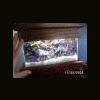
8 year old 1 gallon reef, 12 yr old planted sphere (19")
brandonm replied to brandonm's topic in Members Tank & Specs
http://imageshack.com/a/img537/5871/y36Yfd.jpg Updates -
Wow. This is fascinating. Was thinking of starting a pico tank in my office! Glad that I stumbled across it. Forgot the know how of starting a marine tank after so many years. But I guess I can always pick it up again Time to shop for a suitable tank!


